INTRODUCTION
The heavy working hours after the industrial revolution had put leisure to a more and more important role in contemporary life. People want to travel to ‘escape’ and compensate themselves from work and daily life.
The practice of leveraging tourism for economy growth has been proved useful in Spain since the 1960s. And this model has been implemented successfully in other countries as well.
But tourism is not a single sector, it has impact on practically every sector of the economy and the destination’s social and environmental conditions.
The tourism sector in the Balearic Islands contributes to more than 45% of the GDP and employs over 30% of the workforce. The history of mass tourism in the Balearic Islands can be traced back to before the 1960s. The number of tourists has grown from several thousand to 16 million in 60 years, yet the territory of the islands remains unchanged. What the islands are facing is the increasing density of tourism and the scarcity of resources, which sometimes leads to extreme conditions.
The Balearic Islands, one ‘place’ among many such ‘places’, can serve as the perfect testbed for exploring this research.
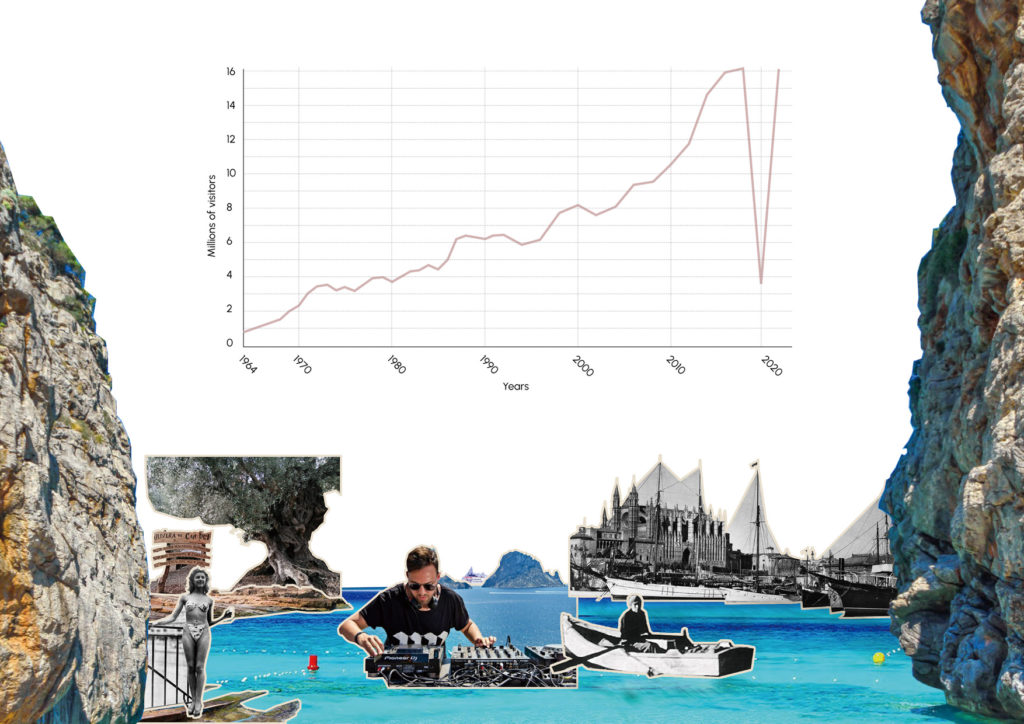
RESEARCH QUESTION
Can tourism be leveraged as a design action strategy to mitigate the effects and impacts generated previously by the same industry, and also respond to the challenges posed by the climate crisis and planetary urbanization, transforming tourists from consumers of resources to prosumers supported by big data and monitoring in understanding and managing land use dynamics?
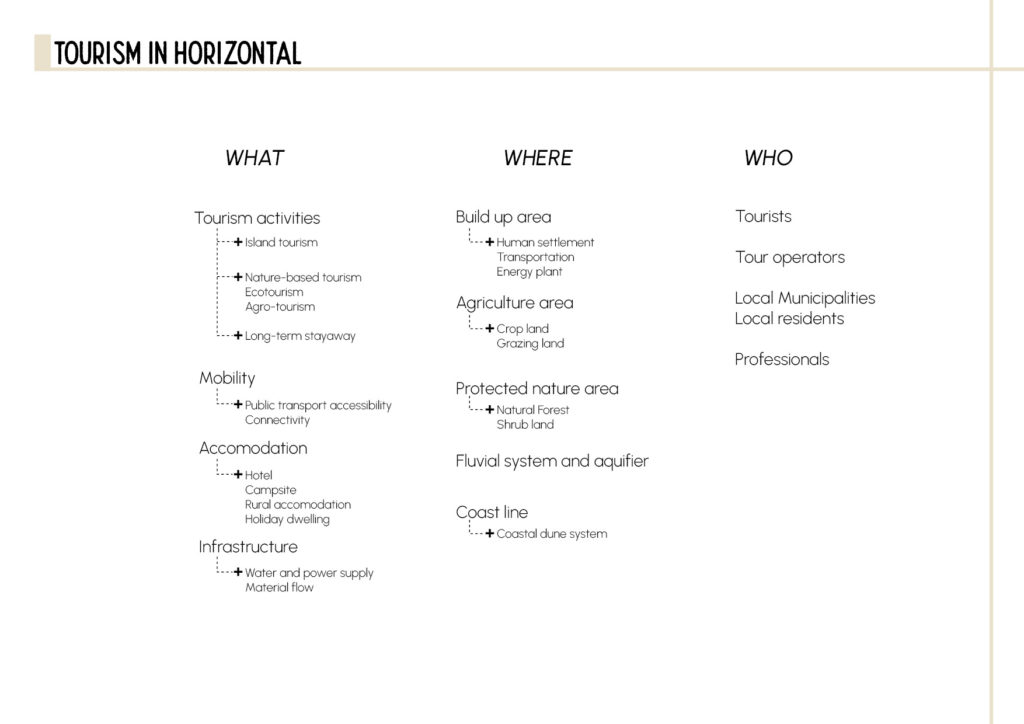
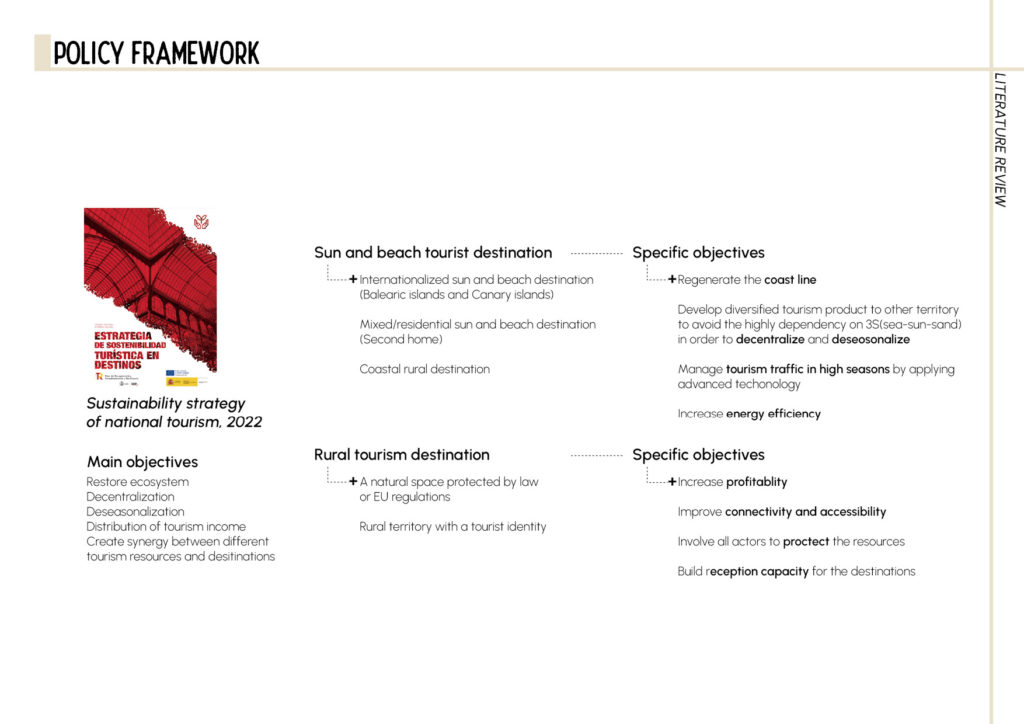
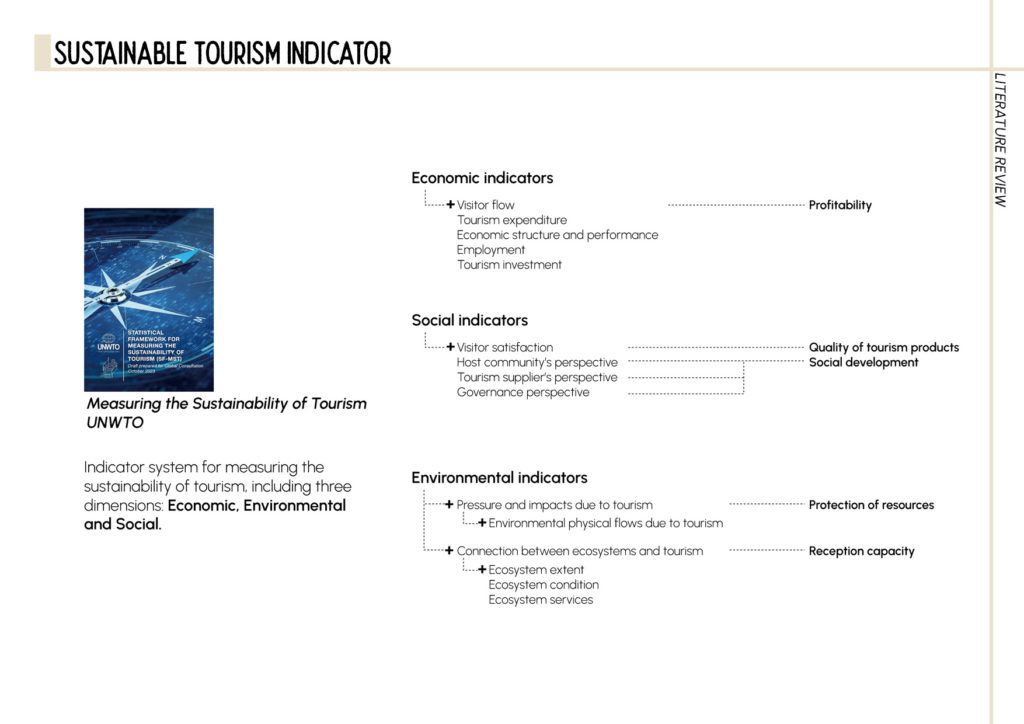
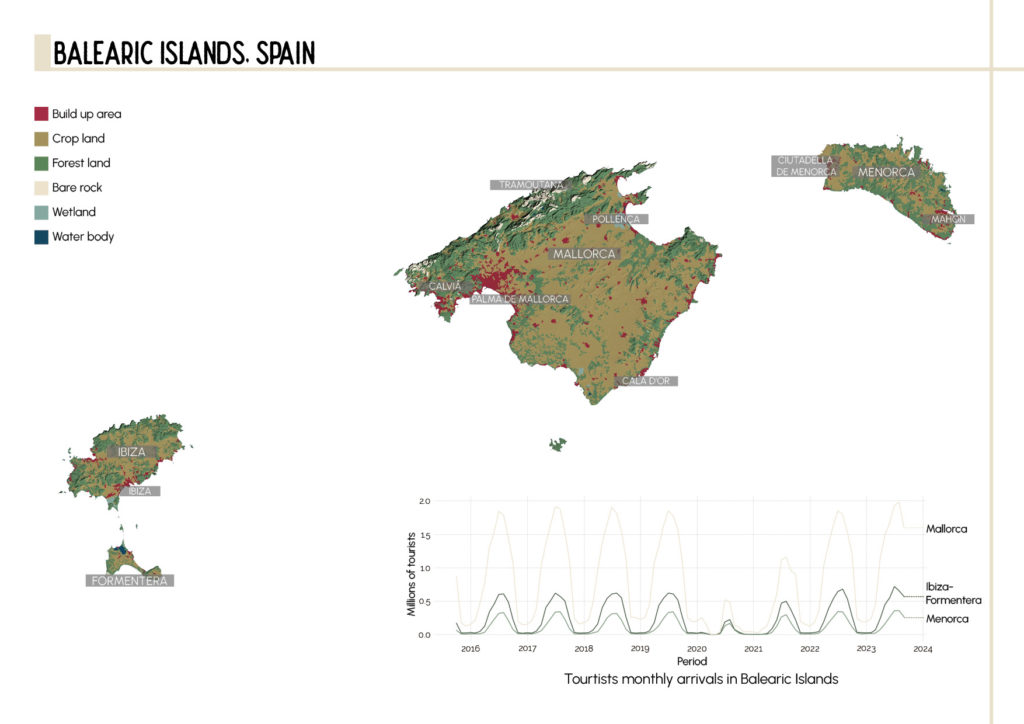
The Balearic Islands have four distinctively different islands. The Mallorca Island, as the biggest one and the most famous one, has created a sophisticated tourism industry, welcomes the most tourists among the four. Ibiza followed the hippies movement from the 1960s, transformed the island as a night life paradise. Formentera has been committed to the sustainable tourism development, which helped to keep the natural environment and their original lifestyle. Menorca was declared as a Biosphere Reserve from 1993, it also keeps a responsible tourism development.
But they have one thing in common, the strong seasonality of tourism. The government has been trying to fight against the seasonality, but still, the Balearic is forgotten from people in winter.
BALEARISATION AND THE HISTORY
Extensive coastal tourism, often achieved through rapid, unplanned building with all its associated social, environmental and political consequences, came to be known as balearisation, as a result of the type of tourism growth in the Spanish Balearic Islands in the early 1960s.
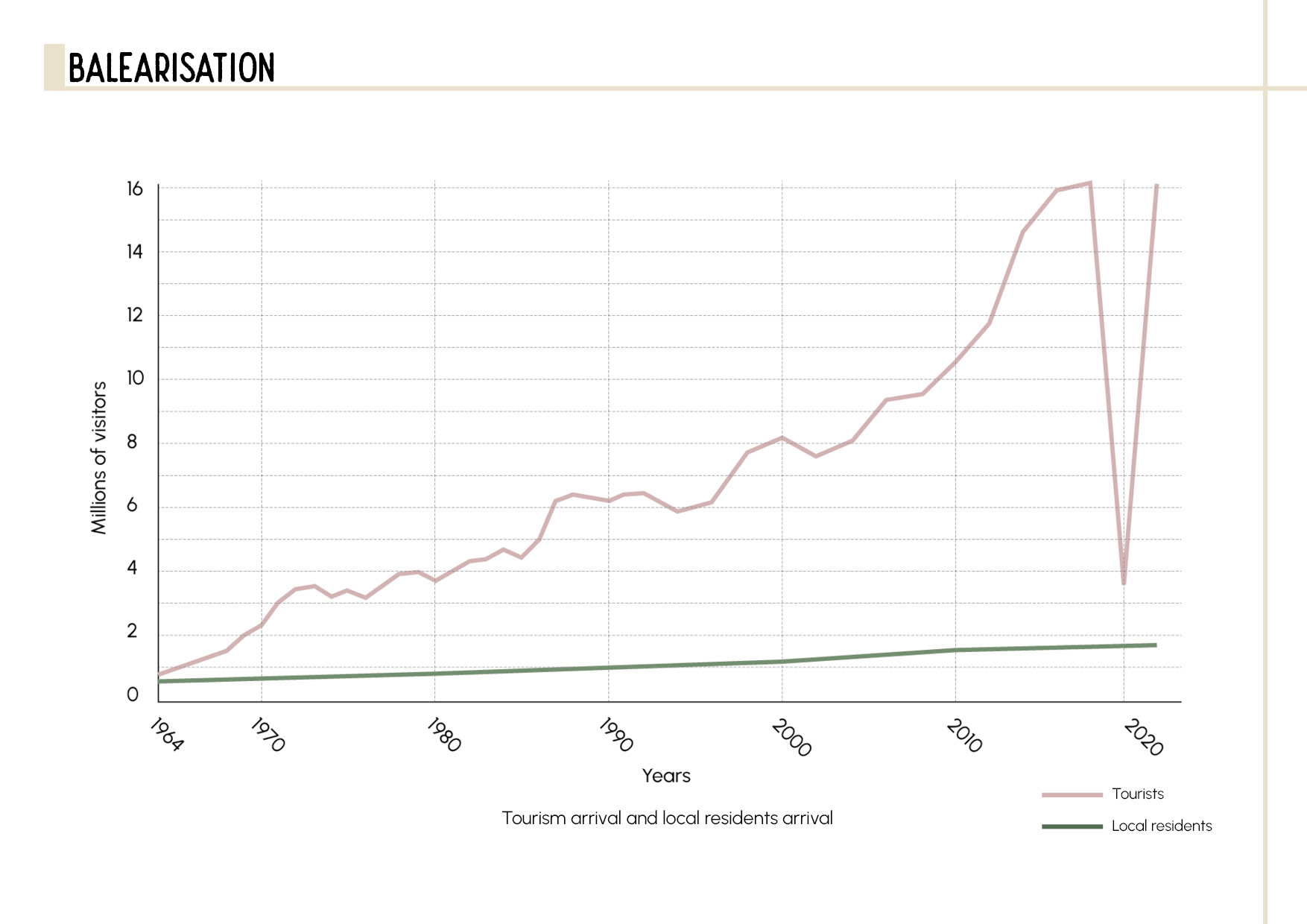
RESOURCES
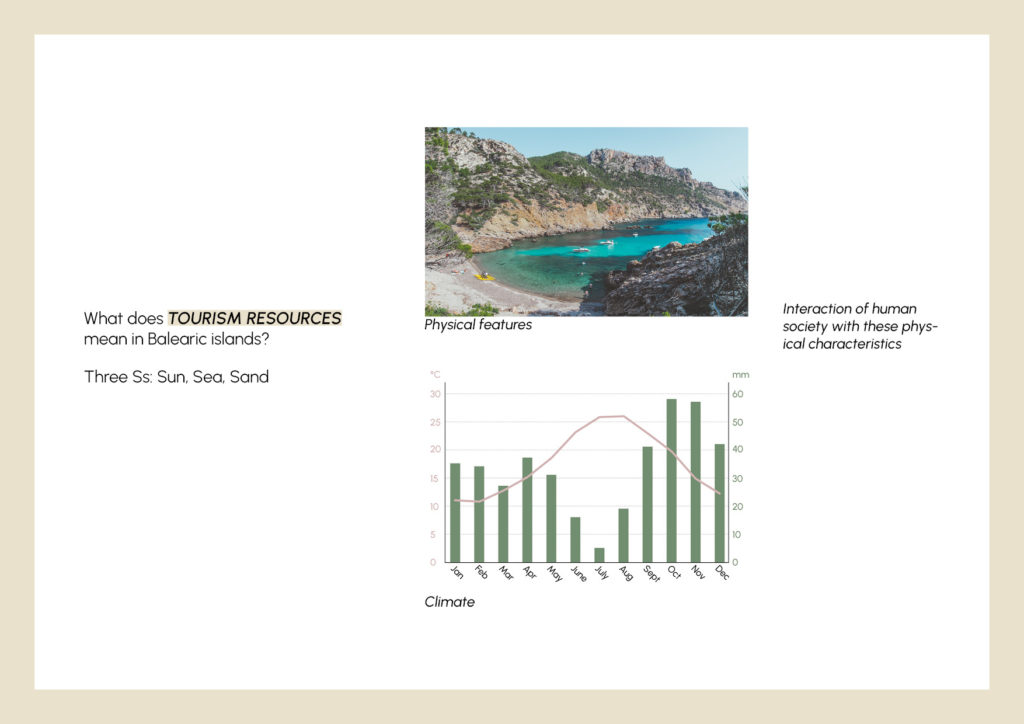

The hotels are concentrated along the coastline which has clearly marked what is the most important tourism resources here. But the story of the land along the coast line had a big twist during the past 100 years.
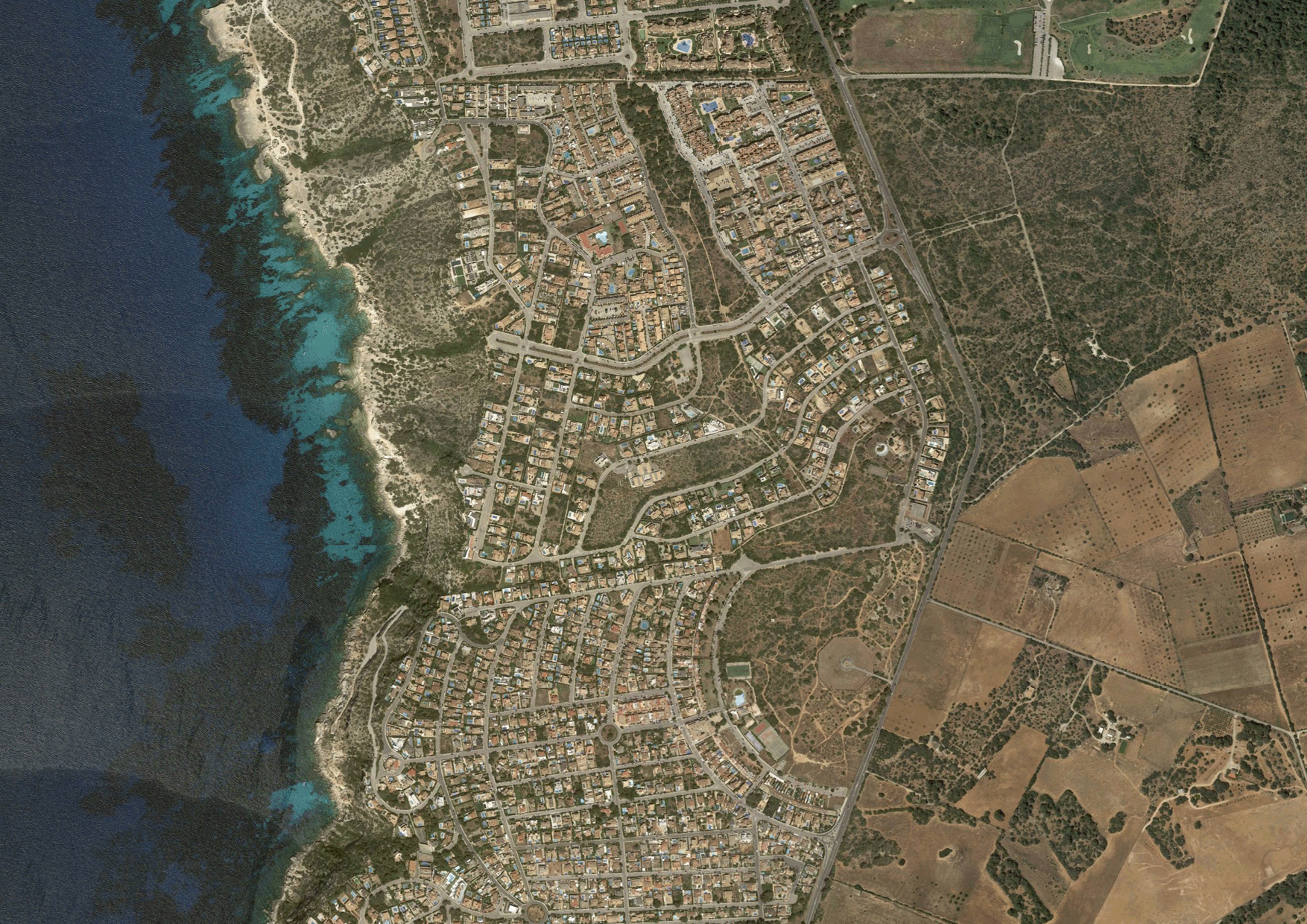
But in the ecological perspective, the story has another twist. The large scale urban construction has destroyed the beach-dune system that formed the beautiful white sandy beach.






EXPECTED OUTCOME
Design a toolbox for the extensive tourism territory to manage the land use and social development by applying big data and technology.
Design a strategy and policy framework to leverage tourism to mitigate the impact that generated by the same industry.

